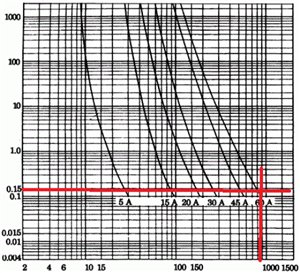Just wondering what peoples first thoughts are on a 6mm main earth. 0.27ze, TNCS. 80A 1361 main fuse.
Iv'e tried doing a search on here but it did not come up with any results. (Maybe user error!). I'm sure this subject would have come up before.
Andy,
where did you get your 0.3S from please? From a Fig 10 of the 15th edition for an 80 Amp B.S. 1361 fuse and 850 Amps, I got about 0.7 second.

We're about to take you to the IET registration website. Don't worry though, you'll be sent straight back to the community after completing the registration.
Continue to the IET registration site